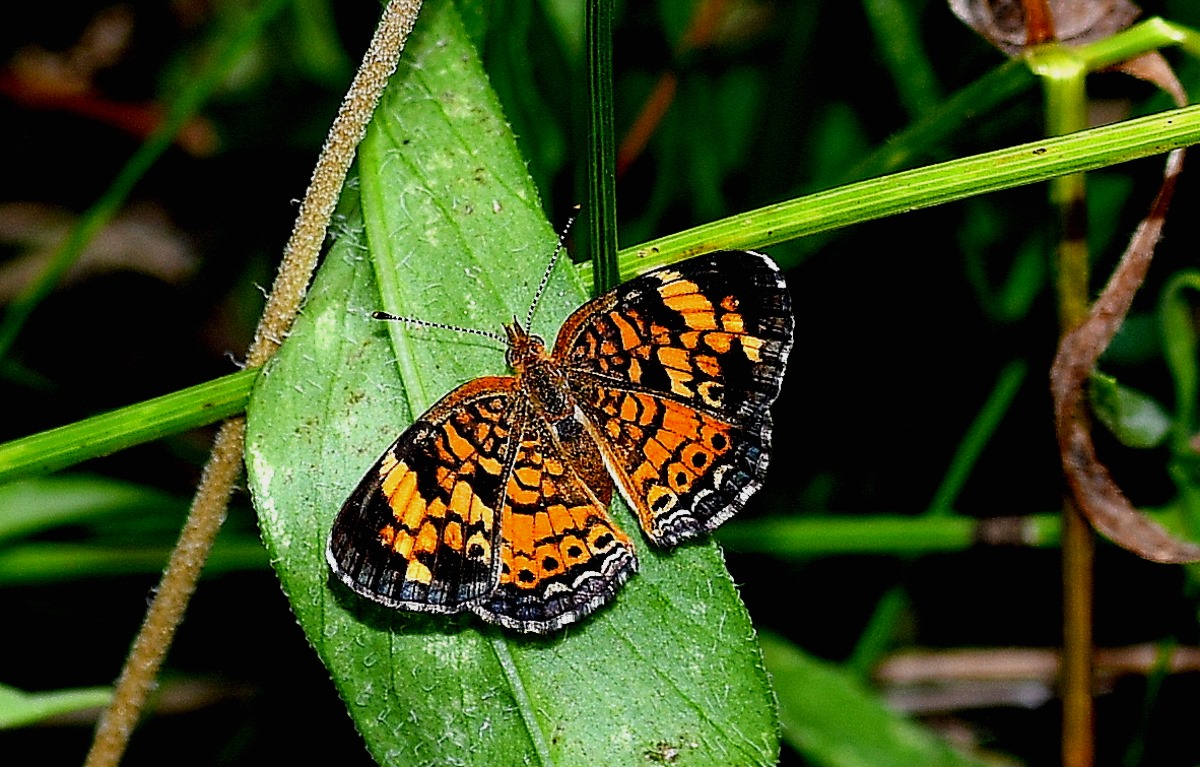
By Terry W. Johnson
One of the most beautiful butterflies to grace Georgia is the pearl crescent. However, due, in large part to its demure size, it is also one of our most overlooked butterflies.
The pearl crescent has a wingspan ranging from 1.25 to 1.75 inches wide. Females are larger than males. Looking down on a pearl crescent, the butterfly appears tawny orange and black. Its wings are bordered in black, with black splotches and lines creating an attractive orange and black pattern. The insect's underside is much paler. Along the trailing edge of the hind underwing is a dark patch that encircles a pale crescent. This tiny, pearly colored mark gives the pearl crescent its name.
The pearl crescent is one of our most common butterflies. In the Peach State it can be seen in south Georgia from early February through late November, while throughout much of the rest of the state it can be spotted from spring through fall. During these many weeks, the pearl crescent produces multiple broods. However, while it is possible to spot the butterfly anytime this time of the year, there are occasions when you would be hard-pressed to find a single one. When this occurs, it is usually because the butterfly is between broods. By that I mean as one brood of pearl crescents is slowly living out its short life span, another may have not yet emerged to replace it.
The pearl crescent is arguably the most successful member of its tribe. For certain, the butterfly's success is closely linked to the fact that it is a consummate generalist: It literally thrives in a number of different habitats. Throughout the state, it can be seen flitting about our backyards, in clearcuts, along highways and forest edges, in utility rights-of-way; you name it.
In addition, it will nectar on a wide variety of plants. I have seen them sipping nectar from the beautiful orange blossoms of butterfly weed (better known as a host plant for the monarch). In my backyard, I’ve also spotted them on a number of nectar plants, including butterfly bush, coreopsis, lantana, black-eyed Susan, coneflower, white clover and blanket flower.
However, although the pearl crescent lives in variety of habitats and nectars on scores of plants, it lays its eggs only on asters. As such, if you don't have asters growing in your neck of the woods, you won't see the pearl crescent.
Also, though you will rarely come across a large number of pearly crescents in one location, if you do, you might have stumbled across a puddle party. The pearl crescent is one of several species of butterflies that convene on mineral-laden mud or sand. They gather at such spots to consume the minerals concentrated there.
Interestingly, should you find such a gathering, chances are all of the butterflies there will be males. This will hold true for all butterflies at the puddle. In fact, since females are so rarely seen, these puddle parties are often called bachelor parties.
The pearl crescent displays an erratic, rapid flight. This makes trying to identifying them difficult when they are flying. But this problem vanishes when the butterfly lands and begins nectaring: Then you will be able to see the distinctive color pattern of its wings.
One behavior that will help identify pearl crescents is their behavior while feeding: They will continually open and close their wings as they feed.
During the recent period of drought, the pearl crescent was one of the few butterflies regularly visiting my backyard. When I see one, it is usually flying close to the ground. If it happens to be a male, I know it is spending most of its time searching for a mate.
Keep your eyes peeled for this dainty black and orange butterfly. Once you take the time to identify a pearl crescent, you will not overlook this beauty again.
Terry W. Johnson is a former Nongame program manager with the Wildlife Resources Division and executive director of The Environmental Resources Network, or TERN, friends group of the division’s Nongame Conservation Section. (Permission is required to reprint this column.) Learn more about TERN, see previous “Out My Backdoor” columns, read Terry’s Backyard Wildlife Connection blog and check out his latest book, “A Journey of Discovery: Monroe County Outdoors.”




















